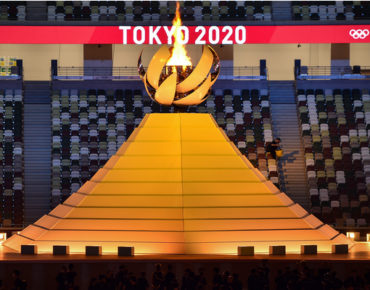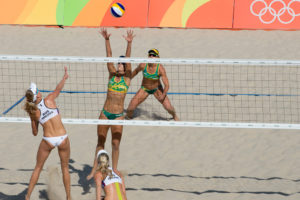AI Bringing New Insights to the 2020 Summer Olympic Games in Tokyo

You may not be noticing it much on your television, smartphone or tablet screens, but the TV coverage of the Tokyo 2020 Olympics (which of course are being held in 2021 due to the COVID-19 pandemic) are infused with big data and AI to an extent never before experienced in the history of the Olympic games.
It’s been 53 years since the Olympics officially adopted electronic time-keeping equipment to track racers in Olympic events. Omega’s Magic Eye camera, which debuted in 1948, gave us the first of many “photo finishes” for track events, and was soon adopted in other events as well.
Now the technology is cranking up a notch in the Tokyo 2020 Olympics (which perhaps should have been called the 2021 games), and Omega is again behind much of it.
For example, Omega, which is the official timekeeper for 35 Olympic sports, is using cameras equipped with computer vision capabilities to track the movement of beach volleyball players, as well as the ball in play.
According to an article in Wired magazine, Omega has trained its AI to be able to identify a slew of different moves and shots, including smashes, spikes, blocks and passes. This information is then combined with data gathered from gyroscopic sensors sewn into the players clothing, to give commentators real-time information on the exact movement of players and the ball.

Omega is using AI track the movement of beach volleyball players and the ball during the 2020 Olympics (Celso-Pupo/Shutterstock)
“When you can track the ball, you will know where it was located and when it changed direction. And with the combination of the sensors on the athletes, the algorithm will then recognize the shot,” Alain Zobrist, head of Omega Timing, tells Wired. “So it’s this combination of both technologies that allows us to be accurate in the measurement of the data.”
We are worlds away from the age of men with stopwatches timing races. In fact, you could say we have made a quantum leap from that time. At this event, Omega is employing the Quantum Timer, which is a form of atomic clock that uses laser-cooled single ions that are confined in an electromagnetic ion trap, according to a story in Digital Trends. (Okay, it’s not AI, but it’s still pretty cool.)
If you surf for fun, then big data is the last thing you want on your mind as you’re waiting for the next set. But surfing today is an extremely competitive sport – not to mention an Olympic sport for the first time – and the USA Surfing organization is employing plenty of big data techniques to help its athletes gain an edge.
The USA Surfing organization is also using big data techniques to gain an edge. According to an article in the Wall Street Journal, the group is using big data and AI in a variety of ways. At a physiological is tracking cardiovascular output, sleep patterns, heart-rate variability, and the frequency of certain injuries in a bid to improve the performance of its athletes.
The group has collected biomechanics data of its surfers using motion-capture cameras and sensors installed on a plate that’s a stand-in for a surfboard that detect how much force the athletes are expending. That is helping trainers fine-tune their training, and more carefully walk the line between generating “superhuman” abilities and an injury. It’s also taking a machine-learning approach with images of surfers’ stances on boards.
Read the rest of this article on our sister website, Datanami.
Related
Alex Woodie has written about IT as a technology journalist for more than a decade. He brings extensive experience from the IBM midrange marketplace, including topics such as servers, ERP applications, programming, databases, security, high availability, storage, business intelligence, cloud, and mobile enablement. He resides in the San Diego area.










